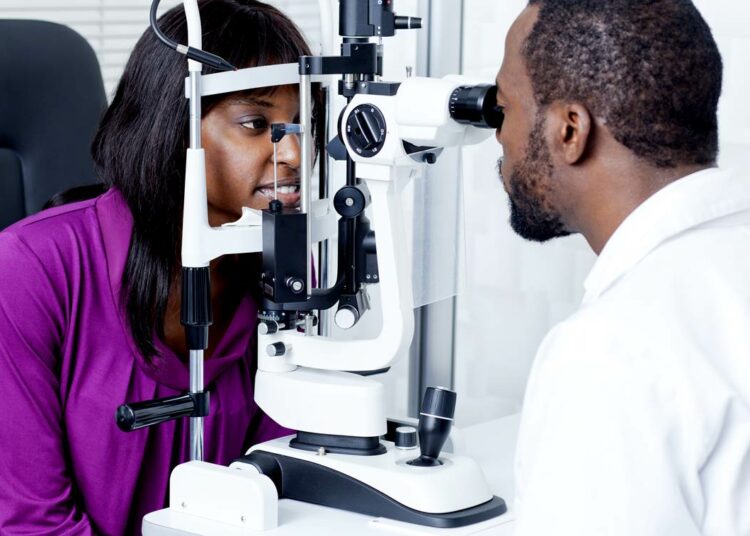An innovative multidisciplinary study conducted by researchers from Nigeria and Japan has successfully validated and optimised the Smart Eye Camera (SEC) as a teleophthalmology device to help reduce preventable and treatable blindness in Nigeria.
The study was coordinated by Professor Emmanuel Oluwadare Balogun of the Department of Biochemistry at Ahmadu Bello University (ABU), Zaria, in collaboration with experts across both countries.
The study, titled “Validation and Optimisation of Smart Eye Camera as Teleophthalmology Device for the Reduction of Preventable and Treatable Blindness in Nigeria,” has been published in Eye, a leading Nature journal in ophthalmology.
This novel device, developed by OUI Inc., Japan, provides a cost-effective, portable, and accurate alternative to traditional slit-lamp microscopes (SLM) used for eye examinations.
Balogun, in a press statement yesterday, said the validation was achieved through collaborative research involving scientists and ophthalmologists from Ahmadu Bello University, ECWA Eye Hospital, Kano, Ahmadu Bello University Teaching Hospital, Keio University School of Medicine, Tokyo, Yokohama Keiai Eye Clinic, and OUI Inc, Japan.
The SEC, he said is a smartphone-mounted device that enables detailed eye examinations, including the diagnosis of common anterior segment conditions such as cataracts, corneal ulcers, and keratitis.
According to him, the study conducted at ECWA Eye Hospital, Kano, and ABU Teaching Hospital, Zaria, showed that the SEC produces high-resolution images with up to 96% diagnostic accuracy, comparable to conventional slit-lamp machines.
“The SEC proved to be portable, easy to use, and effective, making it an ideal solution for rural and remote areas where access to ophthalmologists and advanced diagnostic tools is limited. Its affordability and versatility could bridge the gap in eye healthcare accessibility across Nigeria.
“One of the most remarkable findings of the study is that the SEC costs approximately N1.7 million, compared to N13 million for traditional slit-lamp microscopes.
“This substantial cost difference positions the SEC as a game-changer in combating blindness in Nigeria, where an estimated 1.13 million people are blind, with the highest prevalence in the North-West region.
“In addition to being cost-effective, the SEC offers real-time telemedicine capabilities. Images can be captured in remote communities and transmitted instantly to ophthalmologists for assessment.
“This enables prompt diagnosis and treatment, even in underserved areas. The device also provides cloud storage for seamless data sharing and analysis,” he said.
The scientist further said that with over 1.2 billion people worldwide experiencing vision impairment or blindness, 90% of which are preventable or treatable, the SEC could revolutionise eye care, particularly in low- and middle-income countries. The global significance of the study cannot be overemphasised.





